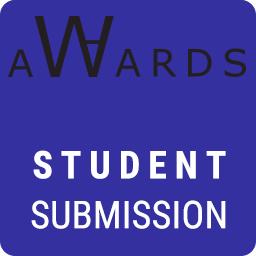-Initiative:
The city of Zonguldak in Turkey has an identity as 'the city of coal' because of the valuable coal reserves underneath its earth. Üzülmez Valley in Zonguldak is a post-industrial site based on coal production. The valley has a crinkly above-ground and under-ground topography resulting from coal formation, and it settles on coal vessels with underground mine tunnels. The soil as a self-producing ecosystem for the city's memory is debated in the context of Turkey by addressing the unique underground topography of Zonguldak.
-Discussion:
The city has its own unique identity, which is constituted by the urban memory. Habitual memories are the daily habits experienced in the past but lost today. Can architecture mediate to reproduce and preserve this memory?
Aldo Rossi states that ‘’the form of the architecture in the city is revealed in its various monuments, and each of the monuments shows us the sequence of the city.’’
With reference to Rossi, the research redefines the urban artifacts as;
*kinesis state of memory: the condition of active urban mobility that sympathizes with the origin of that habit in the past
*fantasy state of memory: the condition of inactive or active urban mobility that imitates the origin of that habit in the past
-Proposal:
The research focuses on three main elements of the memories are being lost in the valley;
#1 the underground coal formation: the cycle of underground coal formation is investigated, and spaces are constructed where the coalification phases are witnessed. The resulting carbon-based urban sculpture rising in the valley creates an archive of the memory of fossilized nature.
#2 topographical subsidence: the landslide down of the soil layers due to the underground mine tunnels is transformed into a spatial reading by the reel system connected to the historical chimney of the valley.
#3 the sound-scape of the valley: the environmental sounds of the valley coming from the institute, machinery, excavations, fauna, wind, heavy rains etc.
The project aims to reconstruct these memory states by using architectural tools and transforming them into spatial senses.
2024
Program of the Proposal
(t)Technopark for Creative Industries:
Reproduction of the kinesis state of the memory in Üzülmez Valley.
(t.1.)Innovation Laboratories: Reproduction of the kinesis moments of the urban artifacts such as coal formation phases starting from the accumulation of plants to the carbonization of fossils. The laboratory has a reel system connected to the chimney to transform the topographical subsidence into spatial movements by reels and ropes.
(t.2.)Working Hubs: Research phases are studied.
(t.2.)Robotic & Modeling Labs: Production of macro-scale urban artifacts by using bio-char based filaments produced in laboratories. The 3d modeled bio-char based structure accumulates and it is harvested by engineers to take its pieces as experimental artifacts. The texture, form and color of the model change in time according to the forest waste type that is used.
Show of Kinesis
(s1)Museum of Kinesis: Museum as a living organism reviving the kinesis states of the memory of valley and display of these kinesis through spaces.
(m.l.)Locus of Memory: Display of the memory of coal starting from the accumulation of plants to the carbonization of fossils.
(s2)Exhibition Experimentally Artifact: Display of the macro-scale experimental products produced in robotic labs, the structure of the memory.
Exhibition of Habitual Memories: Display of the memorial artifacts coming from the natives of the valley as temporal collections.
Services Visitory and administrative units.
Assoc. Prof. Dr. Derya Güleç Özer, Assoc. Prof. Dr. Tan Kamil Gürer, Prof. Dr. Meltem Erdem Kaya, Res. Assis. Ekin Ünlü, Res. Assis. Rümeysa Totuk, Burak Pelenk, Assis. Prof. Nazlı Arslan
Voted 0 times






















